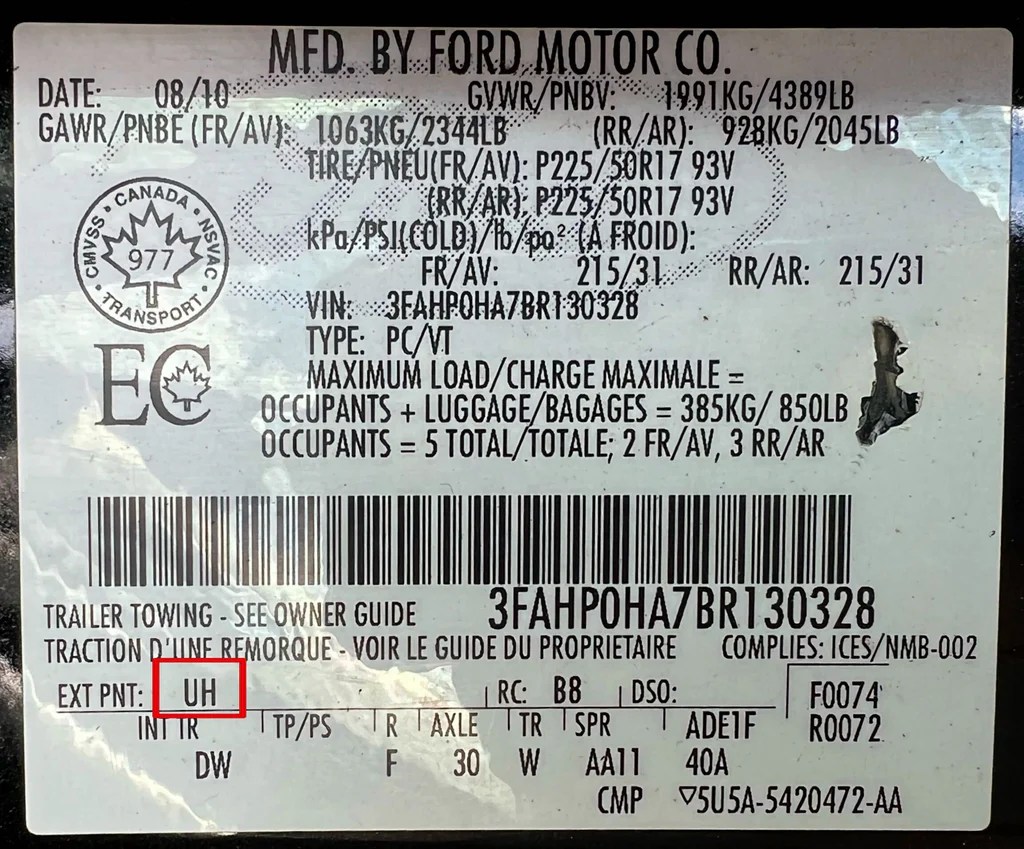How To Get A Paint Code From A Vin Number

Finding the exact paint color for your vehicle can be a frustrating experience. Whether you're touching up a scratch, repairing body damage, or repainting entire panels, getting the correct paint code is crucial for a seamless match. While the paint code is usually found in various locations on the car itself, sometimes it's missing or illegible. In these situations, many wonder if the Vehicle Identification Number (VIN), the car's unique fingerprint, can be used to retrieve the paint code. The answer, unfortunately, isn't a straightforward "yes," but with the right resources and methods, it's often achievable.
Why the VIN Isn't a Direct Route to the Paint Code
The VIN is primarily designed to identify the vehicle's manufacturer, model, year, engine type, trim level, and assembly plant. While it holds a wealth of information, it doesn't directly encode the paint color. This is because manufacturers often offer multiple paint options for the same model and trim level. Therefore, a single VIN could potentially be associated with several different paint codes.
Methods to Retrieve the Paint Code Using the VIN
Despite the lack of direct encoding, the VIN can still be instrumental in finding your car's paint code. Here are the most reliable methods:
- Contacting the Dealership: This is often the most reliable method. Provide your local dealership (preferably the one associated with your car's brand) with your VIN. Their parts department can access the manufacturer's database and usually provide the correct paint code associated with your specific vehicle. They may charge a small fee for this service.
- Using Online VIN Decoder Tools: Several online VIN decoder websites claim to provide paint codes. However, their accuracy can vary significantly. While these tools can decode various aspects of your vehicle's specifications based on the VIN, they might not always include the paint code. Some premium, subscription-based services may offer more comprehensive data, including the paint code. Always verify the information from these tools with other sources.
- Consulting Automotive Paint Suppliers: Many automotive paint suppliers, both online and brick-and-mortar stores, offer VIN lookup services. They typically have access to extensive databases or partnerships with paint manufacturers that allow them to cross-reference VINs with paint codes. Some might require you to purchase the paint from them as part of the service.
Where Else to Look for the Paint Code
Before relying solely on the VIN, thoroughly check the common locations where manufacturers typically place the paint code sticker or plate. These locations often include:
- Driver's Side Door Jamb: This is the most common location. Look for a sticker or plate attached to the door jamb on the driver's side.
- Under the Hood: Check near the radiator support, strut towers, or on the firewall.
- Inside the Glove Box: Some manufacturers place the paint code information inside the glove box door or on an adjacent panel.
- Spare Tire Well: In rare cases, the paint code information might be located in the spare tire well.
The paint code is often a combination of letters and numbers. Look for labels like "Color Code," "Paint Code," or abbreviations like "CLR."
Understanding Paint Code Variations
Even with the correct paint code, achieving a perfect match can sometimes be challenging. Factors like paint fading due to sun exposure and variations in the original factory mix can affect the final color. Professional paint shops often use a process called color matching, where they use specialized equipment to analyze the existing paint on your vehicle and create a custom blend that matches perfectly.
The Importance of Using the Correct Paint Code
Using the wrong paint code can lead to a noticeable color difference between the repaired area and the surrounding panels. This not only detracts from the vehicle's appearance but can also reduce its resale value. Investing the time and effort to find the correct paint code is essential for achieving a professional and aesthetically pleasing result.
In conclusion, while the VIN doesn't directly provide the paint code, it serves as a valuable tool for retrieving this information. By leveraging dealerships, online resources, and paint suppliers, you can often pinpoint the correct paint code and ensure a flawless paint match for your vehicle. Remember to always double-check the information and consider professional color matching for the best possible results.
